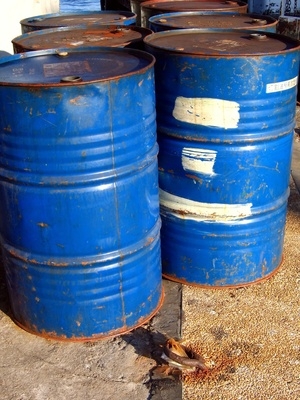
Gasoline laws generally vary depending on the state in which you are transporting, storing and using gasoline. However, the Occupational Safety and Health Administration (OSHA) has a set of guidelines to keep anyone handling gasoline safe.
Transport and store all flammable liquids in approved containers in volume of five gallons or less at a time. Approved containers are metal or plastic with a spring-loaded lid, spout covert and pressure release valve. Containers must also have a warning label. Companies such as Factory Mutual Engineering, Underwriters' Laboratories or a federal agency approve containers for gasoline.
All containers must have a label that states the contents, quantity and flammability of the gasoline in the container. Warning labels must state that the container should not be kept near flames or heat. Display yellow warning labels in a highly visible spot.
Never store gasoline in a home, office or other building of residence or employment. Fill the container 95 percent and close the container tightly. Store the container out of the sun and in a location around 80 degrees. If you are storing the fuel for a long period of time, use a fuel stabilizer to prevent the fuel from breaking down.
Keep the fuel container in the rear of the vehicle, trunk or truck bed away from any source of heat. Take caution during transportation to avoid spills.